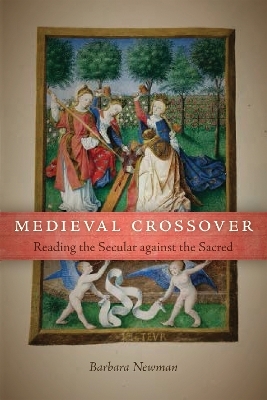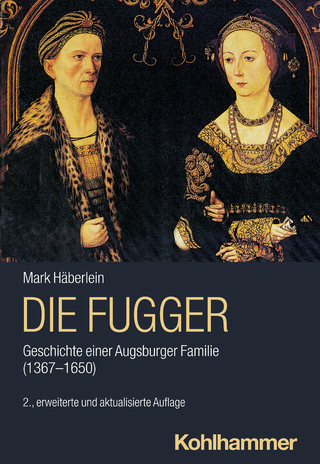
Medieval Crossover
Reading the Secular against the Sacred
Seiten
2013
University of Notre Dame Press (Verlag)
978-0-268-03611-9 (ISBN)
University of Notre Dame Press (Verlag)
978-0-268-03611-9 (ISBN)
Newman highlights the ways in which the premodern reader understood sacred and secular not as opposing points but as a state of double judgment.
The sacred and the secular in medieval literature have too often been perceived as opposites, or else relegated to separate but unequal spheres. In Medieval Crossover: Reading the Secular against the Sacred, Barbara Newman offers a new approach to the many ways that sacred and secular interact in medieval literature, arguing that (in contrast to our own cultural situation) the sacred was the normative, unmarked default category against which the secular always had to define itself and establish its niche. Newman refers to this dialectical relationship as "crossover"—which is not a genre in itself, but a mode of interaction, an openness to the meeting or even merger of sacred and secular in a wide variety of forms. Newman sketches a few of the principles that shape their interaction: the hermeneutics of "both/and," the principle of double judgment, the confluence of pagan material and Christian meaning in Arthurian romance, the rule of convergent idealism in hagiographic romance, and the double-edged sword in parody.
Medieval Crossover explores a wealth of case studies in French, English, and Latin texts that concentrate on instances of paradox, collision, and convergence. Newman convincingly and with great clarity demonstrates the widespread applicability of the crossover concept as an analytical tool, examining some very disparate works. These include French and English romances about Lancelot and the Grail; the mystical writing of Marguerite Porete (placed in the context of lay spirituality, lyric traditions, and the Romance of the Rose); multiple examples of parody (sexually obscene, shockingly anti-Semitic, or cleverly litigious); and René of Anjou's two allegorical dream visions. Some of these texts are scarcely known to medievalists; others are rarely studied together. Newman's originality in her choice of these primary works will inspire new questions and set in motion new fields of exploration for medievalists working in a large variety of disciplines, including literature, religious studies, history, and cultural studies.
The sacred and the secular in medieval literature have too often been perceived as opposites, or else relegated to separate but unequal spheres. In Medieval Crossover: Reading the Secular against the Sacred, Barbara Newman offers a new approach to the many ways that sacred and secular interact in medieval literature, arguing that (in contrast to our own cultural situation) the sacred was the normative, unmarked default category against which the secular always had to define itself and establish its niche. Newman refers to this dialectical relationship as "crossover"—which is not a genre in itself, but a mode of interaction, an openness to the meeting or even merger of sacred and secular in a wide variety of forms. Newman sketches a few of the principles that shape their interaction: the hermeneutics of "both/and," the principle of double judgment, the confluence of pagan material and Christian meaning in Arthurian romance, the rule of convergent idealism in hagiographic romance, and the double-edged sword in parody.
Medieval Crossover explores a wealth of case studies in French, English, and Latin texts that concentrate on instances of paradox, collision, and convergence. Newman convincingly and with great clarity demonstrates the widespread applicability of the crossover concept as an analytical tool, examining some very disparate works. These include French and English romances about Lancelot and the Grail; the mystical writing of Marguerite Porete (placed in the context of lay spirituality, lyric traditions, and the Romance of the Rose); multiple examples of parody (sexually obscene, shockingly anti-Semitic, or cleverly litigious); and René of Anjou's two allegorical dream visions. Some of these texts are scarcely known to medievalists; others are rarely studied together. Newman's originality in her choice of these primary works will inspire new questions and set in motion new fields of exploration for medievalists working in a large variety of disciplines, including literature, religious studies, history, and cultural studies.
Barbara Newman is professor of English, religious studies, and classics at Northwestern University. She is the author of a number of books, including God and the Goddesses: Vision, Poetry, and Belief in the Middle Ages and Frauenlob’s Song of Songs: A Medieval German Poet and His Masterpiece.
| Reihe/Serie | Conway Lectures in Medieval Studies |
|---|---|
| Zusatzinfo | 12 Halftones, unspecified |
| Verlagsort | Notre Dame IN |
| Sprache | englisch |
| Maße | 152 x 229 mm |
| Gewicht | 558 g |
| Themenwelt | Kunst / Musik / Theater ► Kunstgeschichte / Kunststile |
| Geschichte ► Allgemeine Geschichte ► Mittelalter | |
| Geschichte ► Teilgebiete der Geschichte ► Kulturgeschichte | |
| Geisteswissenschaften ► Religion / Theologie ► Christentum | |
| Geisteswissenschaften ► Sprach- / Literaturwissenschaft ► Anglistik / Amerikanistik | |
| Geisteswissenschaften ► Sprach- / Literaturwissenschaft ► Literaturwissenschaft | |
| ISBN-10 | 0-268-03611-X / 026803611X |
| ISBN-13 | 978-0-268-03611-9 / 9780268036119 |
| Zustand | Neuware |
| Informationen gemäß Produktsicherheitsverordnung (GPSR) | |
| Haben Sie eine Frage zum Produkt? |
Mehr entdecken
aus dem Bereich
aus dem Bereich
eine neue Geschichte des Mittelalters
Buch | Hardcover (2023)
C.H.Beck (Verlag)
CHF 53,20
Geschichte einer Augsburger Familie (1367-1650)
Buch | Softcover (2024)
Kohlhammer (Verlag)
CHF 47,60


